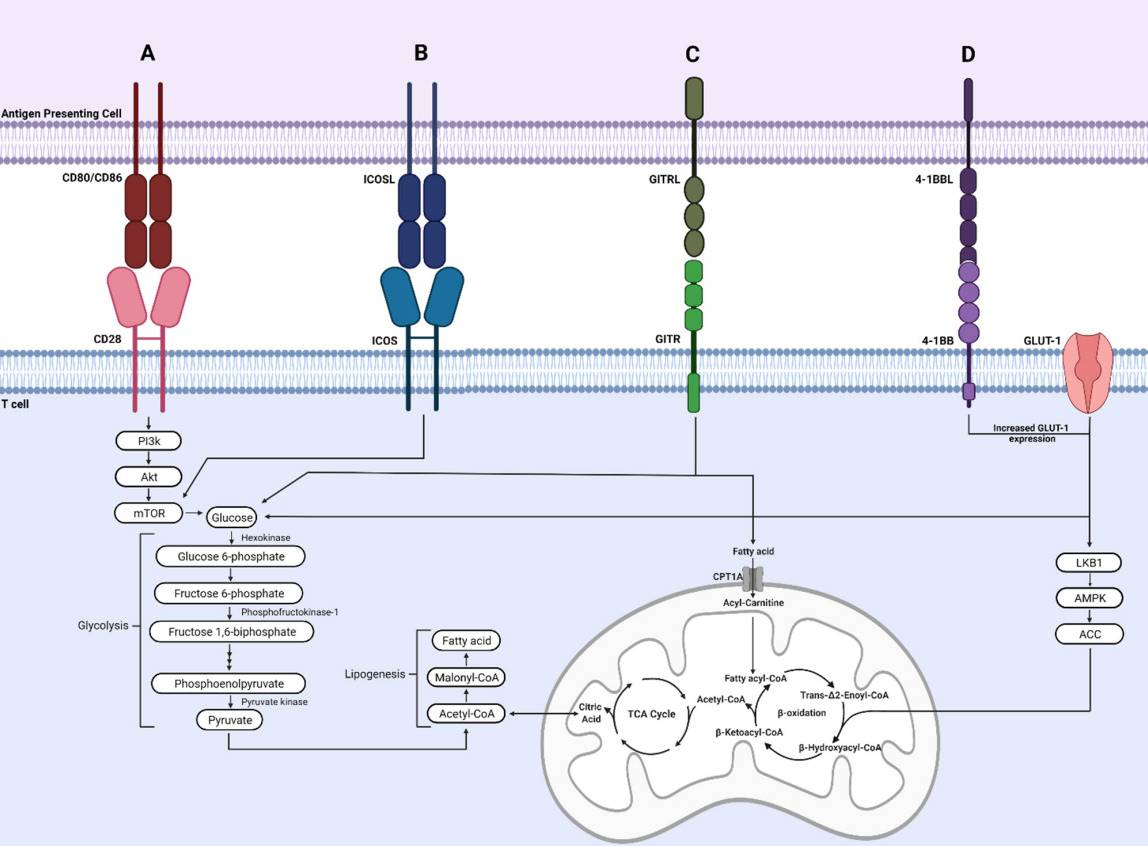Hi-Affi™ Humanized CD28 Immune Checkpoint Knockin Mouse Model
CD28, known as the cluster of differentiation 28, is one of the proteins expressed on T cells which have co-stimulatory functions on T cell activation and survival. In the past few years, basic insight into the roles of the mechanism of CD28 in T cell function has raised a variety of breakthroughs in the understanding of human cancer and the development of cancer immunotherapy. Creative Biolabs has successfully established an array of well-characterized Hi-Affi™ “humanized” animal models, especially for various validated human immune checkpoint KI mouse models including CD28 KI mice. Also, our scientists are proud to assist you in finding the most appropriate models for your new anti-tumor agent's discovery.
CD28 Immune Checkpoint Pathway
CD28 is a transmembrane protein member of the immunoglobulin gene superfamily containing a single extracellular ‘V-like' domain. It is mainly expressed in T cells and is found in substantial amounts on the cell surface of most resting T cells. CD28 signals play a vital role in most T cell processes, including cytoskeletal remodeling, survival, differentiation, and production of cytokines. The CD28 ligands CD80 and CD86 diverge in their expression patterns, multimeric states, and functionality, adding another layer of complexity to the regulation of CD28 signaling. CD80 is predominantly expressed on professional antigen-presenting cells such as dendritic cells, monocytes and activated B cells while it can be induced by other cell types including T cells. The other CD28 ligand, CD86, is constitutively present on antigen-presenting cells (APCs) and is rapidly upregulated by innate stimuli of APCs. Therefore, CD86 may be more important in the initiation of immune responses.
 Fig. 1 Stimulatory checkpoint proteins regulate metabolic signaling. 1
Fig. 1 Stimulatory checkpoint proteins regulate metabolic signaling. 1
CD28 and CTLA4 are highly homologous and compete for the same ligands [B7-1 (CD80) and B7-2 (CD86)]. The affinity of CTLA4 binding to these ligands is higher than CD28, which enables CTLA4 to compete with CD28 for ligands and suppress effector T cells responses. Recent studies have shown that CD28 and CTLA4 have opposing effects on T cell stimulation. CD28 has an activating function while CTLA4 has an inhibitory function, which is now regarded as a prototypical immune checkpoint.
Recent research has revealed a fact that CD28 engagement represents a critical checkpoint in the activation of T cells while CTLA-4 might oppose this function directly. Accordingly, rather than considering CD28 and CTLA-4 as receptors that function separately, the pathway is best regarded as an integrated (and finely balanced) system with CTLA-4 providing a counter balance to CD28 function.
Development of Humanized CD28 Immune Checkpoint Knock-In Mice
The CD28/CD80 pathway is crucial in modulating T cell activation and tolerance. Several studies have indicated that activating the CD28/B7 pathway could be useful for including the immune system to recognize and eliminate tumors that evade the immune system. The importance of CD28 costimulatory signaling pathway in T cell function makes it an appealing target for discovering new drugs to modulate the function of both effector T cells and Treg cells. As a world leader in the industry of animal model, Creative Biolabs can offer you the most efficient Hi-Affi™ platform, which includes various human immune checkpoint KI mouse models, for the sake of supporting your in vivo pharmacological research. What's more, we also established comprehensive in vitro immunomodulation assessment service using various approaches. Please feel free to contact us for more details.
Creative Biolabs also offers other Humanized Mouse Models you may be interested in:
Reference
- Stirling, Elizabeth R et al. "Metabolic Implications of Immune Checkpoint Proteins in Cancer." Cells vol. 11,1 179. 5 Jan. 2022, doi:10.3390/cells11010179. Distributed under Open Access license CC BY 4.0, without modification.
For Research Use Only.
